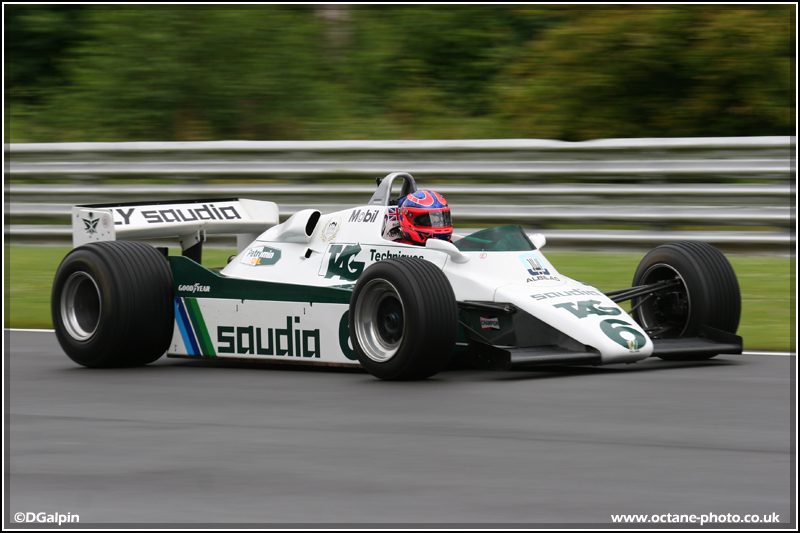- 12,515

- Ireland
- The__Luke
Just curious, are diseasels allowed in F1?
Don't think so.
Just curious, are diseasels allowed in F1?
Just curious, are diseasels allowed in F1?
Nope, current engine regulations demand a 3.0 litre V8 normally aspirated petrol engine.
This does not make sense to me. Why do people think that races were so much more exciting back then and so boring now. In terms of number of overtaking, These past couple of seasons have been phenomenal. My father was a huge racing fan growing up and i Have a few tapes somewhere in my basement that contain footage of some old F1 races. Yea the actual driving was more exciting but the number of overtaking maneuvers was never really that much compared to now.
It wasn't just the fact that cars did not have a lower amount of downforce but they were not as balanced as the cars are today. We should all know that a car's weight balance dictates the way that car handles. Now days, he weight distribution and the setups are so well though out that the only time an f1 car will misbehave is because of driver error. If he gets on the throttle too early: oversteer. If he goes to fast into a corner: understeer. They seem to be neutral. Now obviously they aren't completely perfect but they are very close. Old F1 had obvious bias to them. Some oversteered some understeered.
Downforce does not affect a car's handling. In only affects the amount of grip it has. More in the rear and the front will break first and more in the front and the rear will break first etc. The real problem is how good the teams have gotten at utilizing said grip. Even with the limitations they have, F1 engineers still manage to find the balance to a car. Thats why we don't see as much experimentation. And that is what should be fixed. You can change the engine rules, tire rules ,aero rules all you want but as long as the teams can find a balance to their machines they will be fast cars and we will not have that tail out seemingly wreck-less driving we used to see. We must open the rules some more so they can start doing wild things like fan cars and six wheeled car again!
 ) even if Button walked away with the championship in 2009.
) even if Button walked away with the championship in 2009. Another easy fix: make the soft tires VERY soft; kind of crazy that RBR could make an ostensibly "soft" tire last about 50 laps. I think we'll also see more passing now that the double diffuser goes away for next year.
And I will say the whole sustainability thing needs to just go away. In terms of enviro impact, flying the teams all around the world in 747s has a much greater impact than 20 cars driving around for an hour and a half. 👎



As mentioned in Autosport this week, won't 4 cylinder engines mean the loss of the sonic whine of F1 cars?
Was just reading an article hinting that some Japanese brands may enter F1 in some capacity in/for 2013 or 14, Honda was the only name specifically mentioned though, I think it would be fab to see them join with Williams again.
How about some sort of better alternative? Rotary engines? Or would that scare off everyone except Mazda?
The draft of the rules is currently being sent to the FIA for review. Then the Technical Working Group will sign off on them in January and they'll be approve for 2013.The most significant changes would be the following:
- Much smaller front and rear wings
- A far greater proportion of the total downforce of the cars will be created by the underfloor, compared to the wings
- A major reduction in the amount of total downforce created by the car
- To achieve this, the underfloor of the cars will be shaped along its length to generate downforce for the first time since the 1982 season - currently cars have bottoms that are flat between the wheels
- The average proportion of a lap that a driver is able to spend on full throttle to be cut from 70% in 2010 to 50% in 2013
- Tyres will remain large and chunky to ensure cornering speeds remain high
Probably closer to old Indycars - circa 1995, maybe - than anything else. Indycars have been running ground effects for some time now, though only partially and they're heavily moderated. I imagine the cars won't look too different to the way they do now, just with smaller wings.I literally dread to think what these cars are going to look like.
I literally dread to think what these cars are going to look like.

The average proportion of a lap that a driver is able to spend on full throttle to be cut from 70% in 2010 to 50% in 2013
And on another site I read that that the general pace of the 2013 cars must be no more than 5 seconds slower than current f1 cars.
Good luck with that, I'll be watching knowing that the drivers aren't going as fast as they could be, yawn.